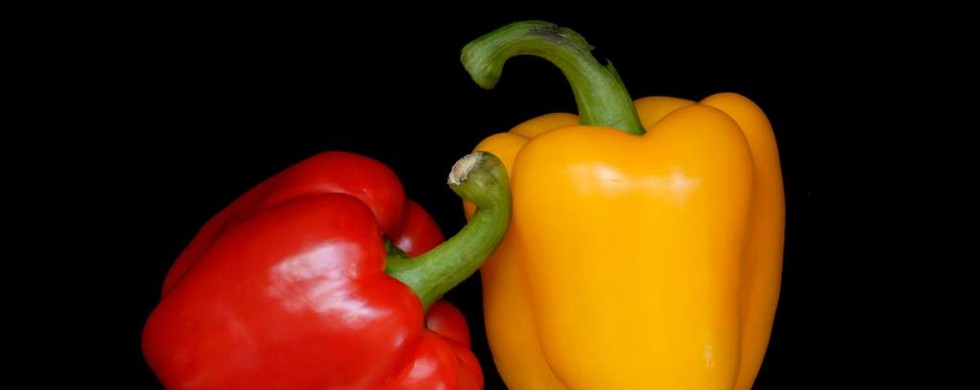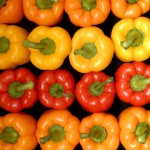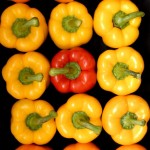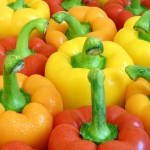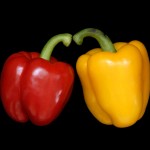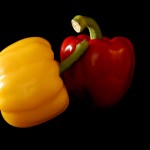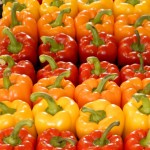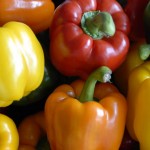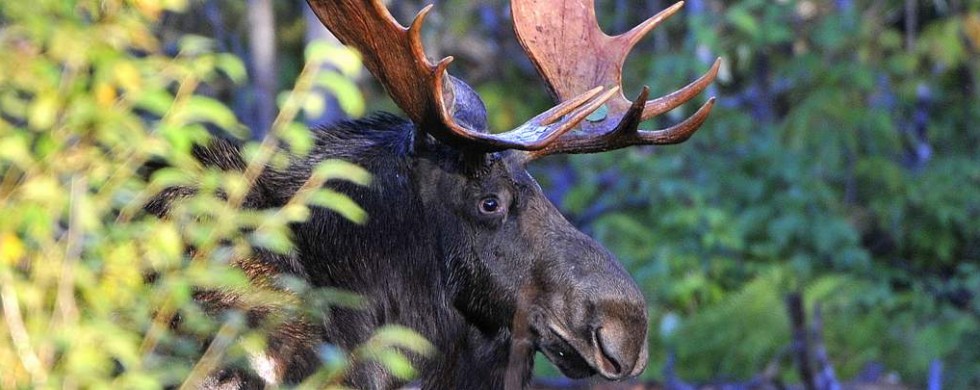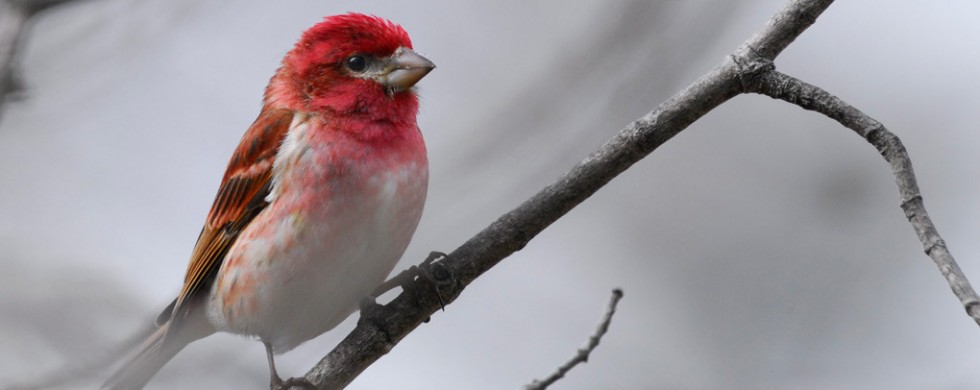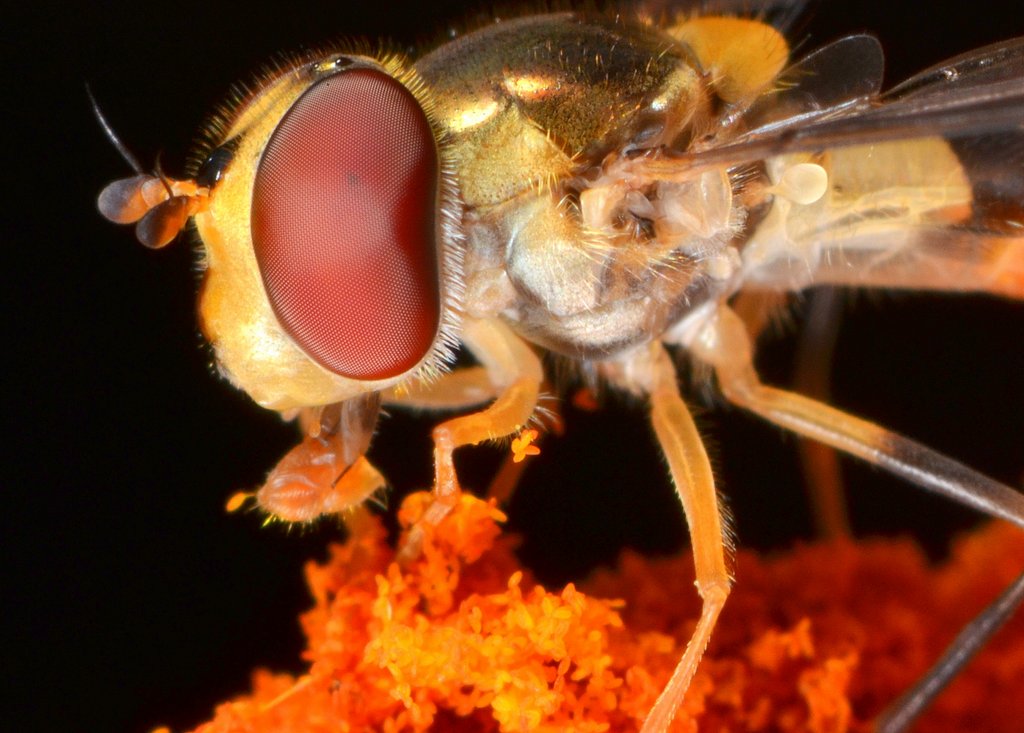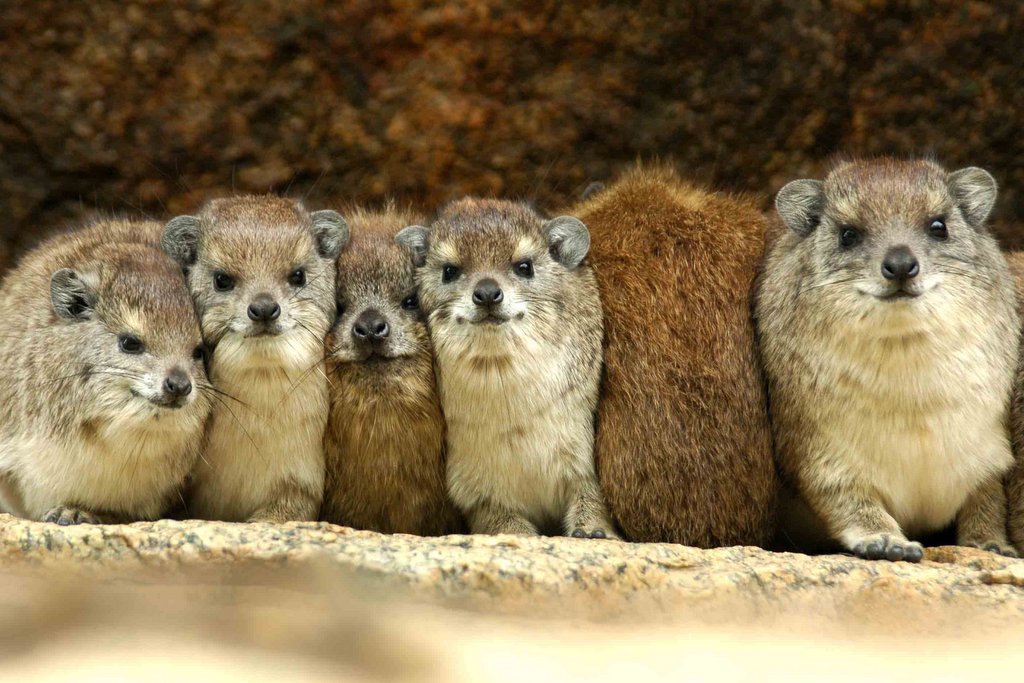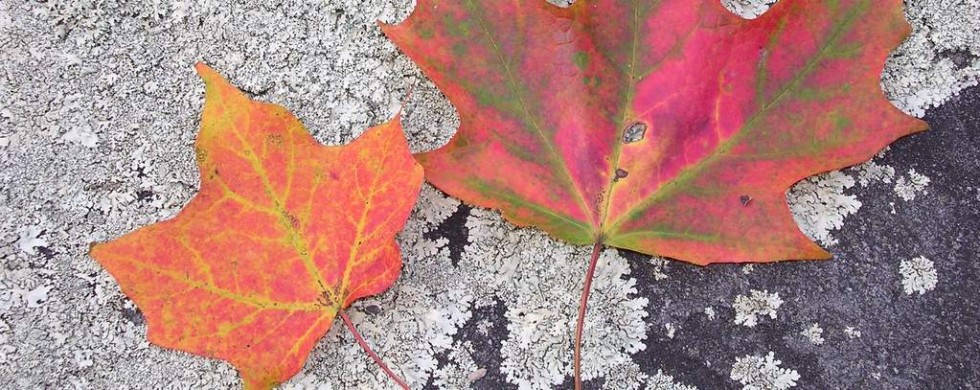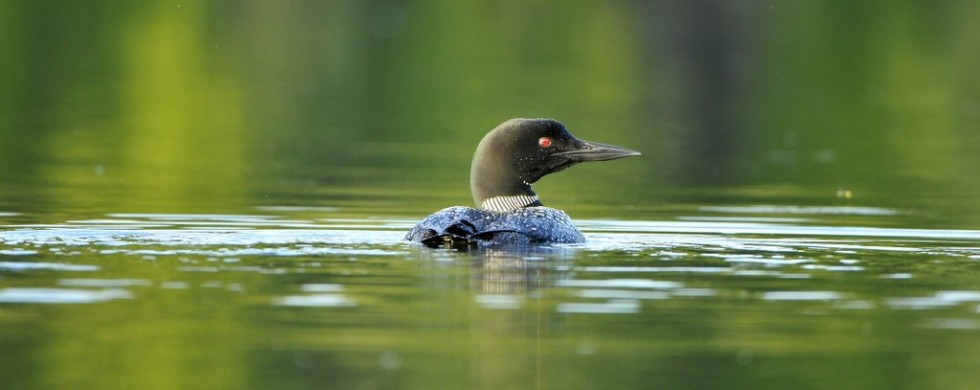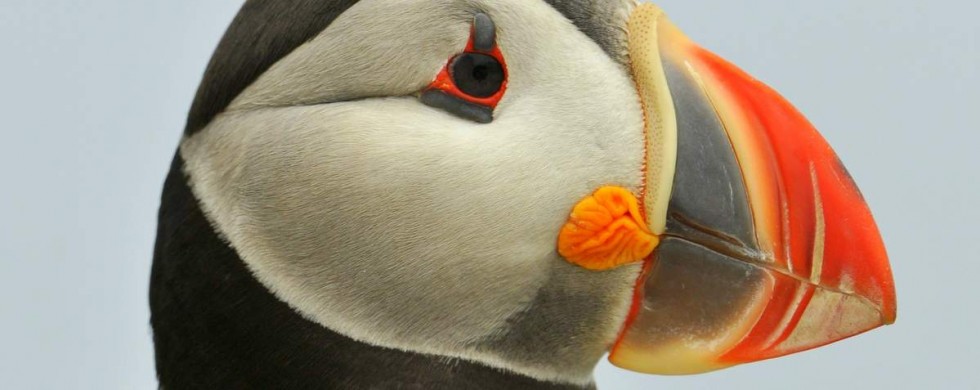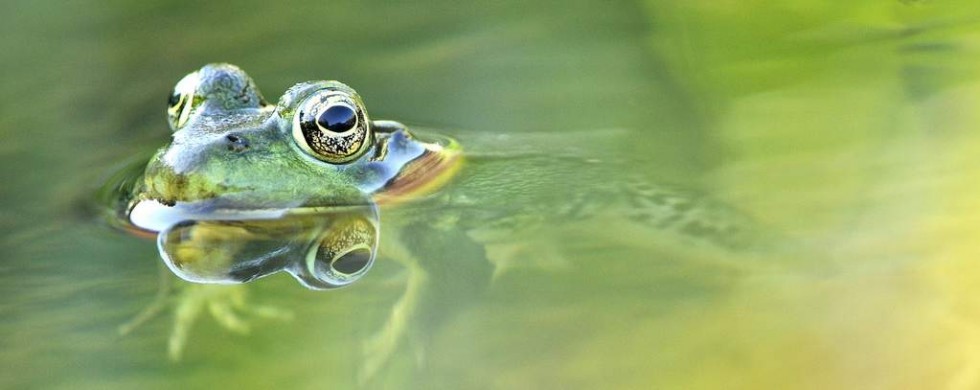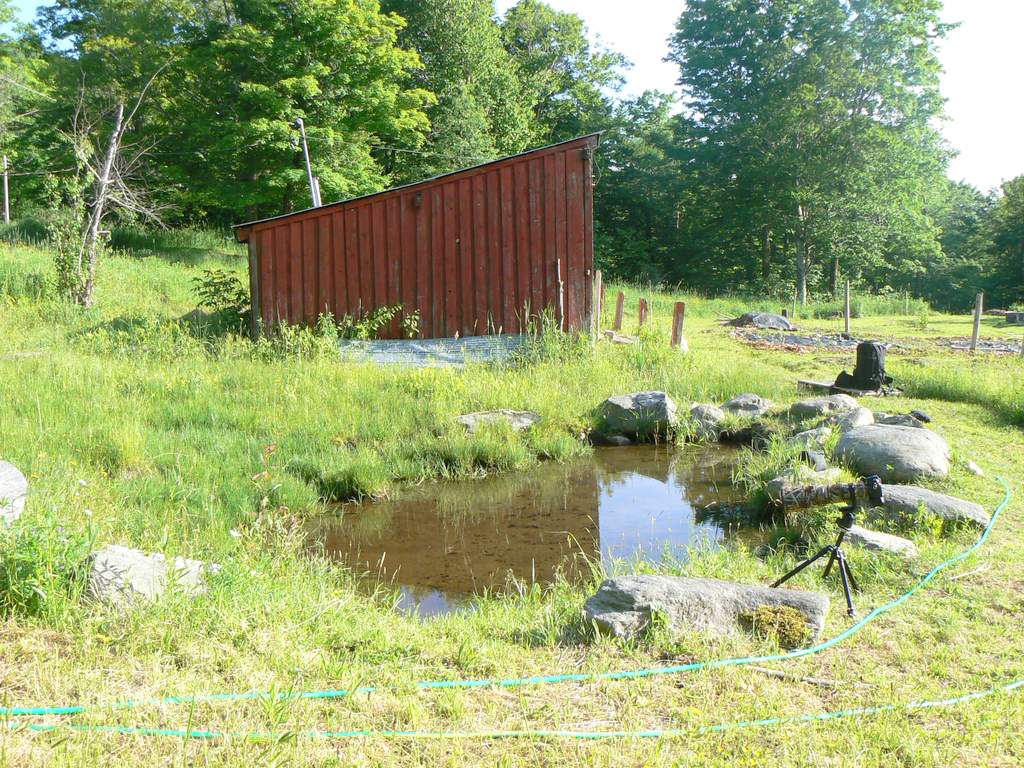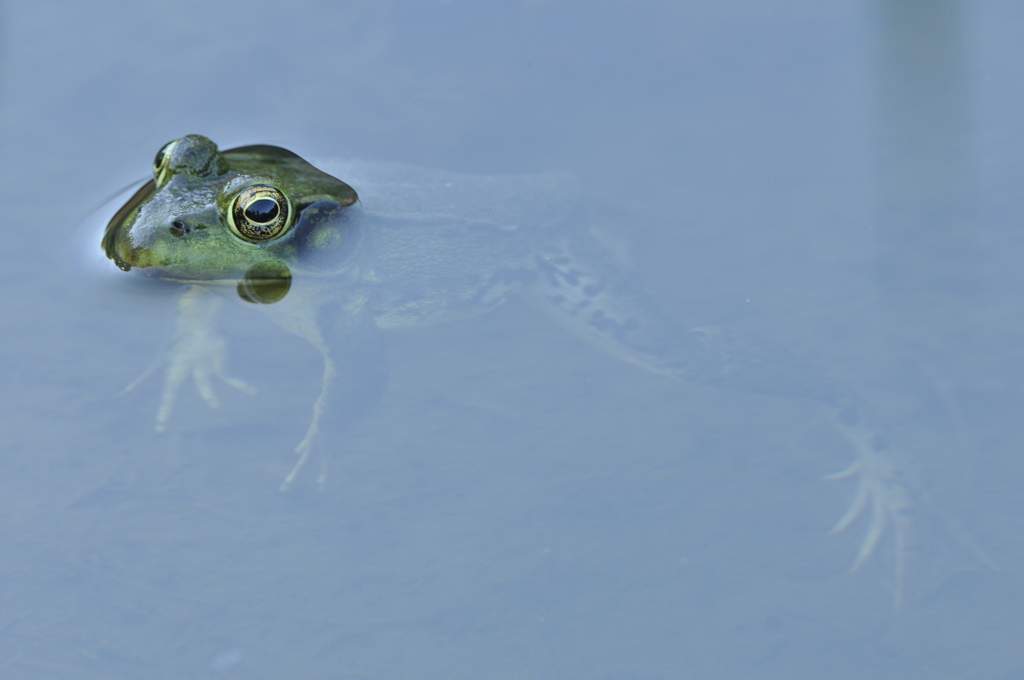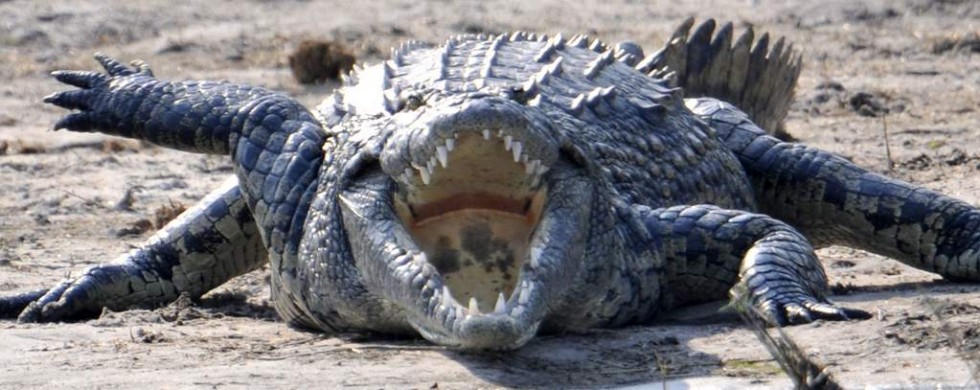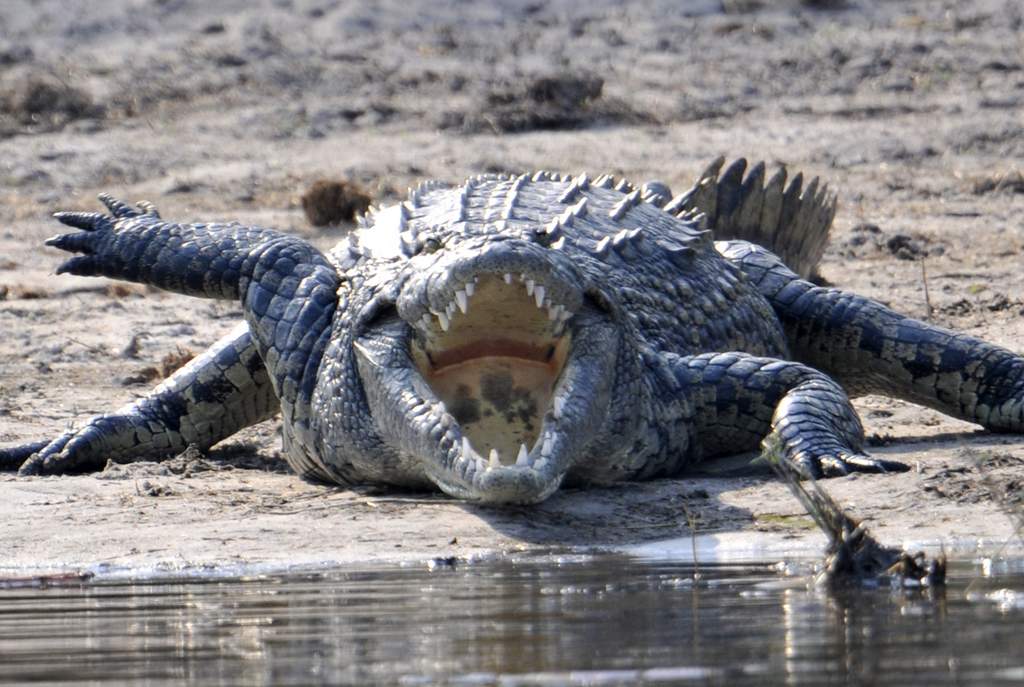26
Shot of the Month – February 2013
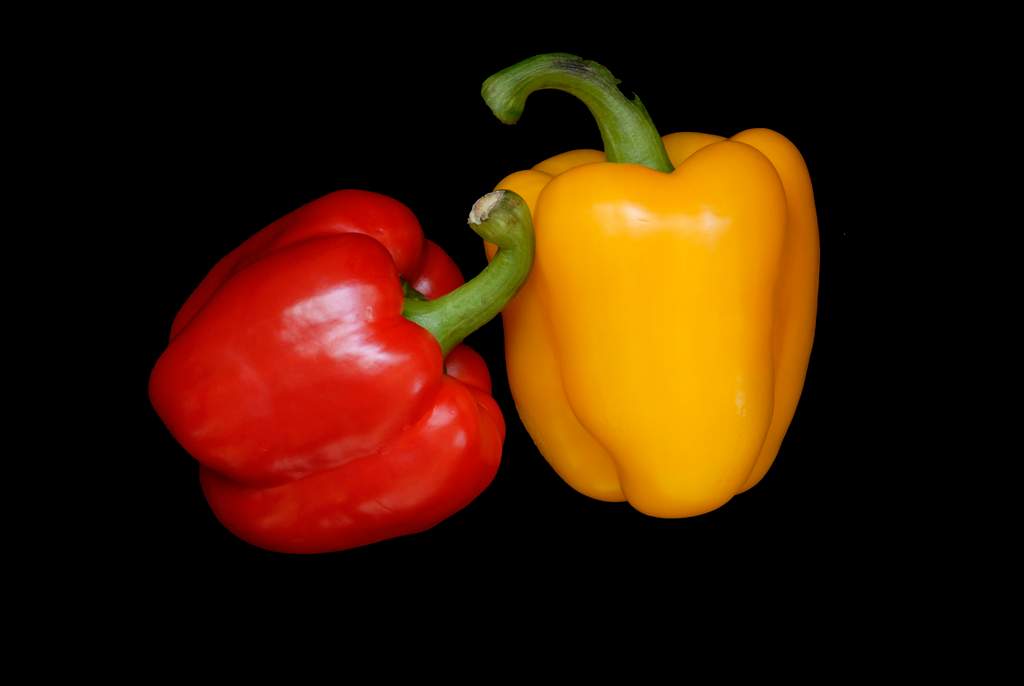 A common ailment this time of year in northern latitudes is “cabin fever,”
A common ailment this time of year in northern latitudes is “cabin fever,”
” a state characterized by anxiety, restlessness, and boredom arising from a prolonged stay in remote or confined space.” (source)
This image is from 2008 and is the result of a similar malady. I had been back in the US for over a year after living overseas most of my adult life. Since returning I had not made any ventures into nature nor taken any photos. It was near the end of a long winter. I was bored. I missed engaging with nature.
I needed to take a photo of something.
Alas, I was living in an urban setting and wildlife was scarce. In my visually mundane environment, one blast of color stood out. Each week we would go to the grocery store and I was captivated by the explosion of color in the vegetable department. There were rows and rows of bell peppers in vibrant hues of green, yellow, and red. Each week I found myself lingering in the produce section wondering how I could capture that visual feast.
The fever was obviously running high as I purchased a ridiculous number of peppers (disregard the odd look from the checkout person). Once home I realized that I did not have enough. Back to the store to buy more. Then I went to the art supply store and purchased some black poster board. And then I began photographing, uh, peppers. I didn’t really know what I was doing as I never do “studio shooting.” I didn’t have the proper light set up, nor the knowledge or technique. But the project kept me engaged for days.
This shot, “Pepper Love,” is popular this time of year since February is also home to Valentine’s Day. In my defense, I can merely plead “Innocent due to insanity.”
I tried all sorts of arrangements. Peppers lined up in rows. Peppers piled high in a bucket. Peppers grouped by color. Then alternating by color. Used a mirror to create the illusion of infinite peppers. Peppers sprayed with water. Intimate portraits. Then mob scenes. Stems lined up. Stems alternating. The delirium raged.
Once the fever passed, a cold hard reality set in. What in the hell were we going to do with all these rapidly ripening peppers? Let’s just say that our freezer was overflowing and we explored a vast range of recipes requiring peppers long into the spring and summer. (I believe it took about a year till the last one was gone…)
In the end, I did not get many images that worked. My lack of experience won out. But I did learn a lot and I am sure that I would get better images on the next attempt. And we do have all those pepper recipes collecting dust…. hmmmn….
A few more “slides” that confirm the diagnosis of “cabin fever.” (Click on a cropped thumbnail to see the full image)
Until next month…. 🙂
30
Shot of the Month – January 2013
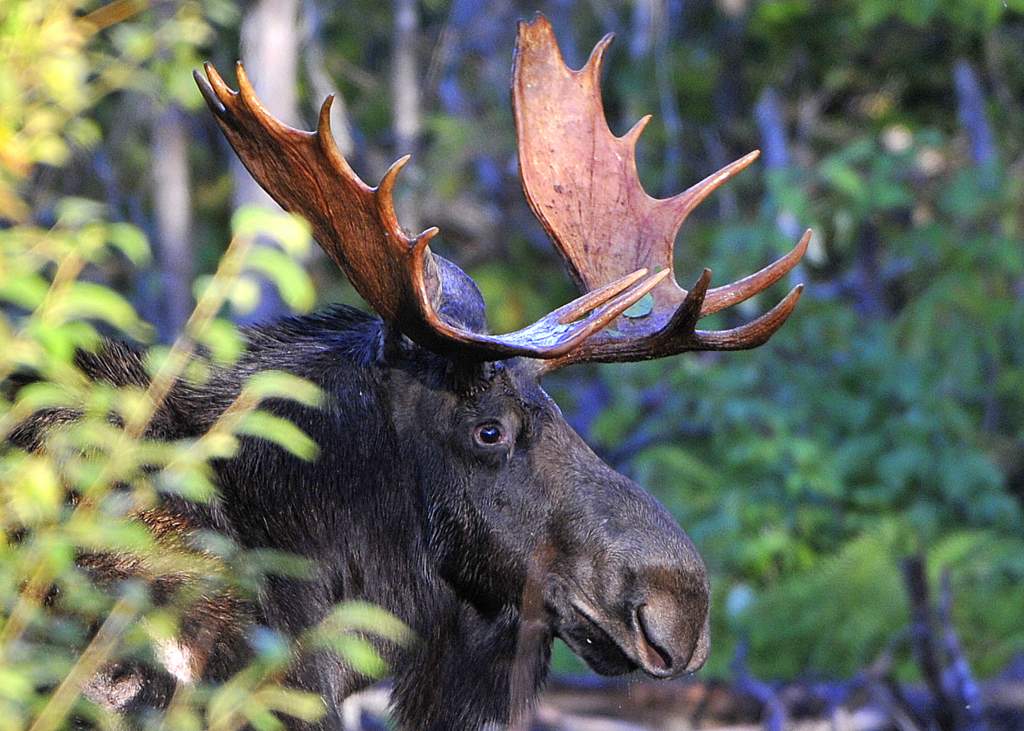 This month an image of the largest living deer species, the moose. Moose are distributed across a large range of the Northern Hemisphere so depending on where you are, you may see one of six distinct subspecies. This particular fellow, photographed in Maine, is an Eastern moose.
This month an image of the largest living deer species, the moose. Moose are distributed across a large range of the Northern Hemisphere so depending on where you are, you may see one of six distinct subspecies. This particular fellow, photographed in Maine, is an Eastern moose.
Canada is home to most of the moose in the Western Hemisphere with a population of 500,000 to 1 million. In the U.S. moose can be found in 15 states. Alaska is king with a population of 200,000. Northern New England states are another moose hotspot with Maine’s population of 76,000 taking the honors. Wyoming has a population of about 8,000 moose and Minnesota has 5,600 Bullwinkles.
In Europe moose are found mainly in Russia (pop. 730,000), Norway (pop. 120,000), Sweden (pop. 300,000 to 400,000), Finland (pop. 115,000), and a smattering in a few other countries.
From this list of countries, you can deduce that moose like cold weather — they primarily live in boreal and mixed deciduous forests in temperate and subarctic climates. Check out this site for some great maps and information on where moose live.
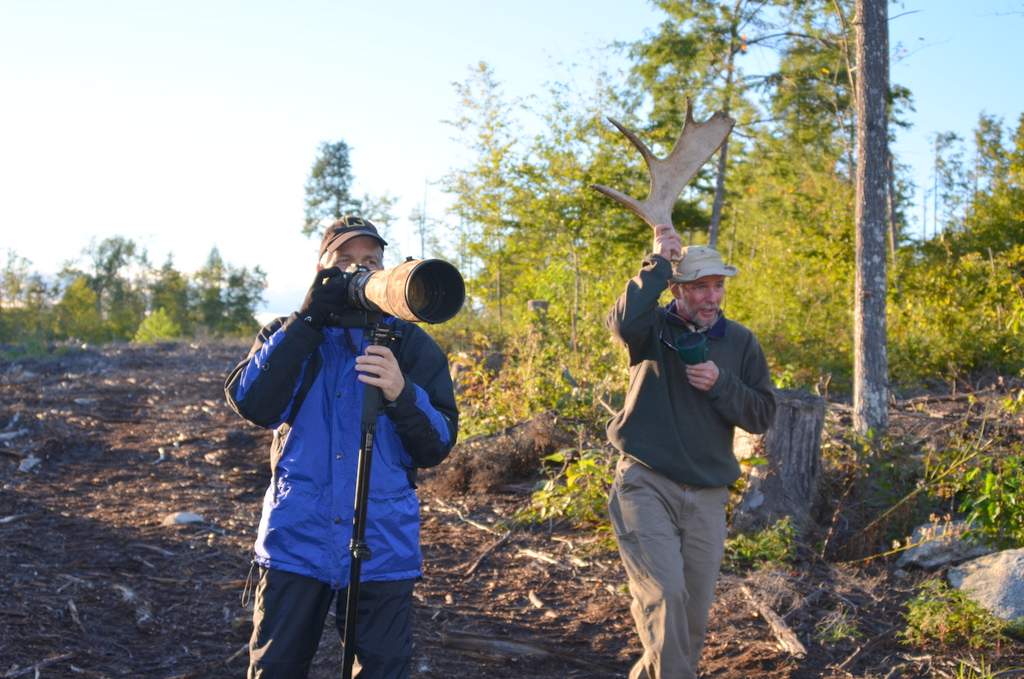
So, how does one find a moose to take his picture? Well, for me it involved spending a sleep-deprived week in Maine. Each day we would get up at 4:15 am to be on the road by 5:00 am. With our local guide Bryant at the wheel we spent each day wandering logging roads in search of moose. We usually did not get back to our hotel until 7 pm. Just enough time for a shower, download photos, and perhaps eat. We were too tired to go out for dinner and typically just nibbled on food we had brought along. In bed by 10 because 4:15 comes at you fast and hard. Repeat.
We timed our visit to coincide with the mating season. During this period both male (bull) and female (cow) moose call out to attract a partner. Several times a day we would stop at “favorable” locations and our guide would imitate a moose call to try and draw in a bull. In the second image, you can see me taking the photo of the moose shown above. Bryant had successfully called this large male in. You may notice that Bryant is holding up an antler — his attempt to look moose-like. Moose have terrible eyesight but excellent hearing and sense of smell.
Seeing a bull moose on a crisp autumn day in Maine…can be tiring, but definitely one for the life list.
Until next month….m
28
Shot of the Month – December 2012
 This month an image that hints at the beauty of the male Purple Finch. Do not adjust your monitor — the name is a red herring. There is nary a purple feather to be found on the fellow.
This month an image that hints at the beauty of the male Purple Finch. Do not adjust your monitor — the name is a red herring. There is nary a purple feather to be found on the fellow.
A more accurate, and superbly sublime, description of this bird was offered by Robert Tory Peterson (all birders in the crowd are now bowing in reverence…)… when he said that the male Purple Finch looked like a “sparrow dipped in raspberry juice.”
What can I add to that mental image that won’t seem terribly pedestrian?
No raspberry dipping for the female — she is is striped strictly in brown and white giving a very monochromatic sparrow-like appearance.
Purple finches breed in Canada and live year-round in Northeastern US and along the American Pacific Coast. In the winter many will migrate down from Canada into most of the states in the eastern half of the US.
Purple Finch Fun Fact: They are the state bird of New Hampshire.
Many people confuse the Purple Finch with the House Finch — they look quite similar. A quick tip for telling them apart: The Purple Finch’s beak is conical shaped while the House Finch’s upper mandible is curved downward. Over the past 40 years, the range and number of House Finches has grown significantly across the United States while the number of Purple Finches has dropped dramatically. Seems that the House Finch is rather aggressive and typically wins the battle for food against the Purple Finch.
Purple Finches dine, at least when House Finches aren’t around, primarily on seeds, berries, and insects. At backyard bird feeders they are particularly fond of black oil sunflower seeds or millet.
Is it just me, or is this whole “purple’ thing driving you crazy, too? Why does a rose-colored bird have “purple” in its name??!! I did some digging. The best answer I can find came from Chris Petrak:
Aside from the fact that bird names often make no sense, why is it called “Purple Finch?” To answer that, we need to know its scientific name: Carpodacus purpureus. The genus name comes from Greek and means “fruit eaters,” a questionable name for birds which are seasonal fruit eaters, but year-round seed eaters. The species name, purpureus, comes from Latin and means “crimson” or other reddish color. Our word “purple,” meaning a color obtained from mixing red and blue, derives from the Latin, purpureus. The Purple Finch is really a crimson-colored finch. Or, translating its scientific name, it is “crimson fruit-eater.” When taxonomists give birds their scientific names and common names, they put aside their science and become impressionistic artists.
A few other writers put forth that the word “purple” in days of olde used to be understood to be much redder in hue than as understood in our modern take of said color. So, way back when, the use of “Purple” Finch would have been more accurate.
Neither answer is terribly satisfying, however I console myself by imagining raspberry sparrow dunking, and my spirits are immediately lifted.
Until next month…Happy New Year!
15
Shot of the Month – November 2012
Fear not, we are not under attack from giant mutant killer bees.
This lil fella, a Hoverfly, is actually less than an inch in length and quite harmless.
There are over 6,000 species of hoverflies around the world and not a single one will harm you.
Most hoverflies look like more dangerous wasps and bees but this is simply a ploy to look threatening and hopefully scare off potential predators.
Gardeners in the know dig hoverflies because they prey on pest insects like aphids and leafhoppers. Savvy growers will cultivate plants that attract hoverflies so they can naturally deal with pests and promote natural pollination.
This extreme close-up (the hoverfly is sitting on the stamen of a flower in our garden and those orange blobs are individual grains of pollen!) is an example of macro photography. What is macro photography? The answer to this takes us down a rabbit hole to a confusing, complex world that can involve all sorts of physics and geeky science. How to shoot such shots equally leads us into a world with a bewildering array of equipment options and solutions. Just a quick tour to give you a sense of it all.
Macro photography, for most of us, simply means close-up photography, usually of small stuff. The end result is an image where the subject appears at least life-size (one inch equals one inch) and often the subject appears greater than life-size, as with this photo.
Do you need fancy equipment to do close-up photography? No. Yes. Well, it depends. You can probably start taking macro shots today if you have a digital point-and-shoot (PaS) camera. Ever notice that little flower icon on your camera?
That setting puts your camera in “macro” mode. The small sensors of PaS cameras allow for some good macro shooting (I’ll spare you the science on why this is the case). If you want more professional results use a DSLR. From here the options are nearly endless.
You can use a “normal” lens and attach diopters in front which are basically magnifiers. You can put a normal lens on backwards (with an adapter) and voila, you have a macro lens. Or you can attach extension tubs to your normal lens which moves it further from the body and allows you to get closer to your subject (which makes it appear bigger). Or you can buy a true “macro” lens which has been designed specifically to give excellent image quality for close-up photography. For stationary subjects, like flowers, you will want to use a tripod. For insects, you will want to use a flash to freeze the action.
For more on the science and equipment options look here, and here.
You can spend a lot or a little. Either way, you can get some very nice shots if you work at it.
One of the biggest challenges in macro photography is the minuscule depth of field. The closer you get (the more magnified the subject) the shallower the depth of field. This means that if you focus on the eye of a bee, his nose could be out of focus! You normally want to set the camera on manual focus and adjust the lens to its minimum focus distance. Then you physically move in until the subject comes into focus. From here, rock back and forth and shoot away when you see the element you want clearly. This can be brutally tiring as the slightest drift can cause you to miss the shot. And it is especially hard with insects and other moving critters. You may need to shoot dozens, and perhaps hundreds of images till you get one where it all comes together. One technique to get around this problem is to shoot multiple images where different parts of the subject are in focus. You can then use software to merge these images and the final result is a photo where much more of the subject appears sharp. This technique is called focus stacking. This is best accomplished with a tripod as the images must be identical so they overlap properly. Hand-held stacking is possible, but you need to be be a Jedi master with an incredibly steady hand to pull it off.
One such macro master is Thomas Shahan. Check out his site for some of the most amazing insect photography I have ever seen.
Thomas also made a great video on macro photography. I have watched it a half dozen times. His Zen-like narration is ultra soothing and the images are spectacular.
The great thing about macro photography is that you need not go far to find compelling subjects. Walk outside and you can spend hours within a few square feet shooting an astonishing array of flora and fauna. Even around your house, the most mundane object can suddenly become a work of art once you find the right scale and angle.
Let the Lilliputian adventures begin…..
24
Shot of the Month – October 2012
This month a family photo of the Rock Hyrax (RH) – an image that is bound to please a diverse range of audiences.
First, for the lovers of all things cute and cuddly, this photo is definitely a crowd favorite. An easy addition to the “Awwwwwl” Collection.
Second, this image will resonate with those who love a good joke. Like really, what’s up with contestant #5 there?
“Hey, where’s the camera?”
(Send your favorite caption/tagline as a comment below)
And these little guys are going to blow your mind if you’re into zoology/taxonomy (read “animal geek”). Most people think that these little fur balls (they weigh from 4-10 pounds) are some form of guinea pig or similar rodent. Nope, not even close. The rock hyrax is actually very closely related to the elephant. All yeah, sure, that makes perfect sense….!!???
Well, it seems that elephants, hyraxes, and dugongs (a marine mammal) all came from a single common ancestor. So these three creatures are more closely related to each other than to any other living animal. (Dude, like my mind is so, pphhhtttttt, completely blown right now..pphhhhtttt..). DNA evidence indicates that hyraxes share many features with elephants: similar toenails, excellent hearing, sensitive pads on their feet, small tusks (hyraxes have 2 incisor teeth that continually grow like the tusks on elephants (they look more vampire-esque than elephantine if you ask me), good memory, high brain functions (compared to other similar mammals), and the shape of their bones.
As you can see from the photo rock hyraxes are a pretty social bunch and can live in groups of up to 80 individuals. RHs are not good at regulating their internal body temperature so on cool days you can find them huddled like this for warmth. I photographed these fellows on a cloudy, chilly morning in the Serengeti NP in Tanzania. They are also pretty talkative – they can make at least 21 different vocalizations. Apparently, RH calls, called “songs” contain rich layers of information about the animal’s size, age, social status, body weight, condition, hormonal state, and so forth.
There you have it, the Chatty-Cathy-social-butterfly-elephantine-cuddly-I-want-to-spoon-fur-ball-but-not-a-rodent!-rock hyrax.
Until next month….
30
Shot of the Month – September 2012
An image of colorful leaves in September — seems pretty normal, if a tad overdone. Other than the subject and the timing, everything else about this photo is pretty unusual– for me.
First, I “made” this shot, rather than “finding” it.
Typically, I go out into the world and look for wildlife or “wild” scenes and try and be in the right place at the right time and capture what unfolds before me. That is not the case here.
While visiting a friend in upstate New York, close to 10 years ago now, we went for a walk in the woods. I found these leaves, separately, and picked each up. I didn’t know what I would do with them, but I liked their looks and carried them along. Later, back at my friend’s house, I noticed a lichen-covered rock slab on a piece of wood on their deck. Inspiration struck and I placed my leaves just so. Click.
Another unusual feature of this image is the camera I used in capturing it. It was not one of my big, “serious” cameras. Rather I shot this with a Nikon Coolpix 3100 – a little 3.1 MP “beginner” point-and-shoot camera. Not very sophisticated to say the least.
The last unusual feature of this shot is that is a “still life.” No critters, just a scene. Just not something I do very often.
For all these reasons I love this photo. I was not only witness but also part creator. That gives me a buzz. And it was so EASY. It doesn’t seem fair — feels like cheating. So different – a shot that took me out of my comfort zone. And I just really like the shot. I am amazed at how nice it looks — I love the hues of the leaves, and the contrast between the vibrant colors and the muted wood, stone, and lichen. And I love the different textures of the muted background.
And I dig this photo because it reminds me that I don’t need fancy equipment or go on long trips to find or make beauty. It is often nearby — simply the right attitude and openness to “seeing” can suffice.
Until next month…
30
Shot of the Month – August 2012
 As a photographer, my focus tends to be on the visual (pun unintentional).
As a photographer, my focus tends to be on the visual (pun unintentional).
I love photos, slides, Polaroids, pictures, snaps, whatever you want to call them. I will happily page through anyone’s photo album. Family vacation? Wedding? Shots of the kids? Driver’s License? Dental x-ray? Whatever, bring it on.
I am fascinated by what people take pictures of. And I love seeing how the world gets reconfigured on “film” (you kids out there can look that reference up).
Sometimes it looks just like what you would expect, but so many times an image is a gateway to a whole new world hidden to the human eye. And I have always been fascinated by animals and nature so images from that realm are a natural draw for me.
But this month the focus is not so much on the visual, but rather the aural. Yes, we have a photo, in this case, a decent shot of a common loon that I found in a pond in Vermont. Visually loons are striking when adorned in their intricate formal black and white mating dress. In the right light, their red eyes are piercing. Their heads are black, but the feathers here are iridescent and can take on shades of emerald green when the light hits just right. Beautiful. Add the black and white striped neck, the black and white checked wings, and that delicate white pearl necklace — the visual feast is almost overwhelming.
Their looks are stunning, but my friends, shhhh, come closer for the real story. It is the Sound. Ahhh, but the Sound. How can I begin to convey the call of the loon to the uninitiated?
Eeerie. Hair-raising. Haunting. Spell-binding. Primordial.
There is n-o-t-h-i-n-g like it in this world. Imagine gliding in a kayak (this is how I first experienced the Sound). The water is perfectly, and I mean perfectly, still. The air is cool and crisp. The sun has not yet fought its way over the horizon but the darkness has started giving way. Shrouds of fog dance across the surface of the water like inverted cones of cotton candy. The stillness is PROFOUND. It is hard to imagine a more peaceful moment in life. And, then, then, there is this Sound. A call, a wail that sends you back eons in time.
No words will capture this. Turn the lights off in your room. Turn the sound up on your computer. Louder. Headphones? Put ’em on. Click on the video below and close your eyes and gliiiiiiiiiiiiiiiide….
(alas, there is a narrative on this video that is trying to be helpful, ignore it…listen for the Sound…)
Until next month….m
15
Shot of the Month – July 2012
how
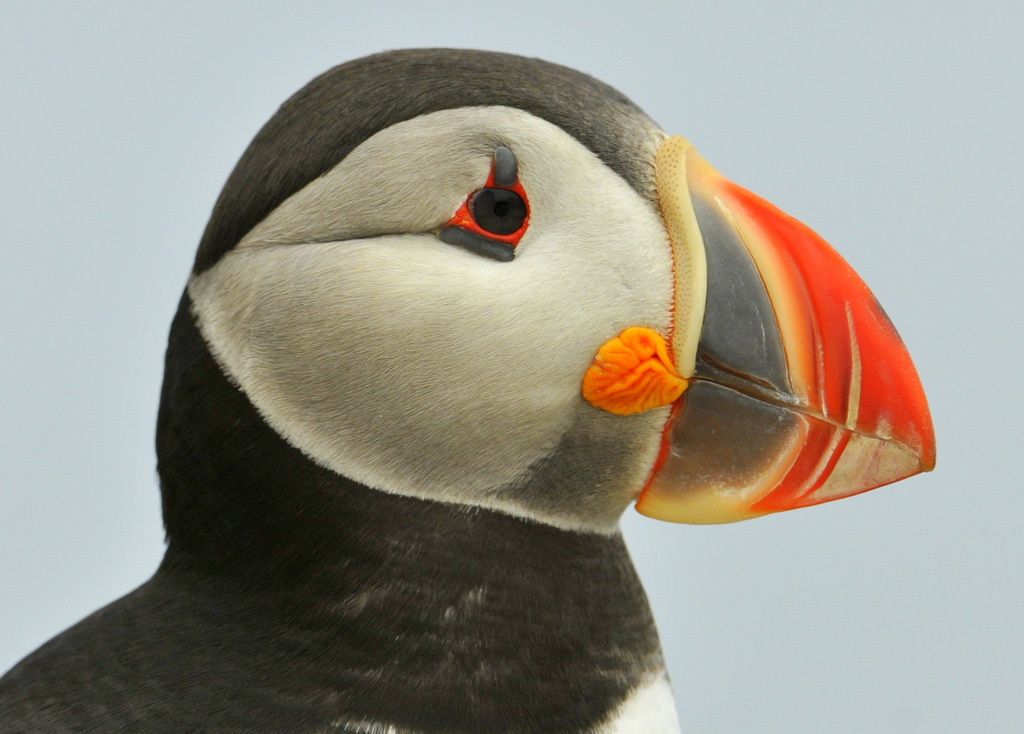 If the lost city of Atlantis had a circus, the Atlantic Puffin, aka “the clown of the sea” would surely be a star act of the show. After having the pleasure of spending some quality time with these birds I can attest that the nickname is well deserved.
If the lost city of Atlantis had a circus, the Atlantic Puffin, aka “the clown of the sea” would surely be a star act of the show. After having the pleasure of spending some quality time with these birds I can attest that the nickname is well deserved.
First, the puffin is decked out in a dapper outfit, has incredible face “makeup”, has oversized colorful feet, and sports a big red nose (ok, the beak is more orange than red, but give me a little poetic license to make this metaphor work) – typical physical characteristics of the clowns I have seen as a child. The stunning coloration is a sign that it is breeding season – both male and female alike are so colorfully adorned. In case you were wondering, it is virtually impossible to distinguish males from the females from looks alone, though the males can often be a bit larger than the females. DNA samples are the only way for us humans to distinguish between Mr. and Mrs. Puffin.
The Atlantic Puffin spends most of her life in solitude on the open water of the North Sea. It is difficult to imagine how hearty this 10-inch bird must be to survive in those conditions. In the summer several thousand puffins converge on the rocks of Machias Seal Island, just off the coast of Maine, to breed and raise their young. After a year apart a breeding pair will reconnect on the island, they mate for life, and raise one chick from a burrow dug in between the rocks.
Second, Atlantic Puffins are funny, as most clowns aspire to be (yes, back to the clown metaphor). When puffins walk they have a waddle that is Charlie Chaplin-esque. Sometimes they walk very quickly with their head down as if lost in thought and late for a meeting. As the rocks can be quite crowded, one must pass through many other puffin territories and this posturing signals that they are just walking through and don’t mean any trouble. Funny.
When a puffin flies in and lands on a crowded rock she will exhibit the “post-landing position.” To get a sense of this recall a memorable gymnast you watched on TV (or saw in person). As the gymnast completed her final maneuver she did a dramatic dismount off the high beam. Remember how she stood there with her arms out and held that pose perfectly still for an exaggerated amount of time to demonstrate that she really nailed the landing? Same with the puffin. Upon landing on a rock, she will put one foot in front of the other, extend her wings out, and lean forward with her head hung low. And, she holds it…………. Still holding it……..aaaand ok. Done. This posturing is a sign of non-hostility that relieves tension when landing among a group of puffins.
And, it looks hilarious.
There are many other puffin fun facts, endearing behaviors, and quirky attributes to explore but that will be for another month. Suffice it to say that I have great affection for these amazing little birds — I find their looks to be remarkable and their pacifist and accommodating demeanor inspiring.
If you want to see Atlantic Puffins in action, check out this live webcam (sponsored by Audubon’s Project Puffin) from nearby Seal Island. But you have to hurry as the puffins will head back out to sea by late August.
And you can see more of my clown, uh, puffin photos here.
Until next month…. 🙂
15
Shot of the Month – June 2012
For the last month I had been running nonstop – almost every waking hour, including weekends, toiling on a project for work. On Sunday morning I decided to give myself a break, a short one, to work on a personal photography challenge. A few weeks earlier I had discovered a small pool of water near our house that was home to a handful of Green Frogs (that moniker is both the official name for this particular species of frog and is an accurate description). The setting, as you can see, was pleasant, but not exactly the Serengeti. And frogs? Not usually the high point of a wildlife safari.
But I was intrigued by the challenge. Could I create a noteworthy image of, a frog? In this pedestrian locale? This would be my first attempt.
When I arrived the pool was in the shade of a tree and there was one frog floating in the water. I walked up and snapped a quick shot.
This is the shot your typical person would capture before they quickly moved along. It certainly documents the facts, but it’s hardly scintillating.
Time to think like a photographer. I splayed out the legs of the tripod and dropped as low as I could go. Photography is all about light and initially, the light was dark and somber. I knew that I would have to be patient and wait to see what opportunities presented themselves as the sun rose and moved across the sky. I positioned the tripod behind a few plants along the water’s edge; hopefully they would provide a bit of color and depth to the scene. I adjusted the aperture to ensure that only the frog was in focus. And I waited…
The result:
This image is much more intimate than the first shot as we are now at eye level with the subject. The colors to the right are the out-of-focus plants in the foreground. As the sun appeared from behind the tree the colors blossomed. For a few moments the light was just strong enough to pull the pigment out of the surroundings – see the reflection of the blue sky and the red shed on his neck? Within a few minutes, however, the light was too harsh and the mood was lost.
I got this shot within 30 minutes though I stayed for about two hours. In that short period, it was remarkable how big this little pool had become. To my surprise, I was soon completely immersed in a new world.
Initially, the scene was still. As the sun appeared on the right side of the pool several frogs migrated to that end to fuel up on the warmth. A couple of fellows crawled out of the water onto a rock to soak in the heat. The longer I sat the more frogs I would “see.” Big frogs. Little frogs. Some hidden in the grass. Others between the crevices of rocks. Some were only a few inches away and I simply hadn’t noticed. One frog seemed rather cantankerous and he bellowed quite a bit. Over time I realized that he was the top frdog in this world. He would bay and the others would respond. He moved from one bank to the other and no one challenged him. With each minute another layer of nuance, behavior, and context. I left feeling exhilarated with my encounter, and properly chastised. I had been so dismissive of what this little pool could offer.
All in all a pretty successful challenge. Like Horton, I discovered a wonderful little world, and I managed to create a respectable image of, a frog, in this tame setting.
So much to learn and admire, to enjoy. If one can find make the time. And find the humility.
Click The Pool to see more images from this amazing little world.
15
Shot of the Month – May 2012
This image makes me very uneasy. My eyes keep drifting past those rows of teeth. Past that mottled tongue. Back to that space where the two jaws meet. My gaze becomes locked as I imagine what this view means for creatures unfortunate enough to see the inside of a crocodile’s mouth.
I photographed this Nile Crocodile in Botswana from quite far away. Very far away actually. I was in a vehicle, on the other side of a large river. I felt uncomfortable then though the danger was nil. Even now, sitting safely in my chair a continent away — a sense of dread. My eyes dart to those teeth. Then to those eyes. The eyes are so tiny. They seem almost like an afterthought. A killing machine so massive and efficient, 55 million years in the making, that it almost doesn’t need to see? And then back, back, deep into the throat of the abyss. My eyes are unable to look away. My mind seized in the grip of forced contemplation of my mortality.
My inability to mentally break free is well-founded in reality. Once in the jaws of a crocodile escape is all but impossible for mortal creatures. No other animal on the planet exerts as much force as the crocodile – in fact, the comparison is absurd. Rottweiler dogs can clamp down on your leg with 335 pounds/square inch of force. Ouch, bad dog. Hyenas can crush bones with their powerful jaws and can apply up to 1000 pounds/square inch. The great white shark has a legendary powerful bite and can exert 1,800 pounds/square inch (Dun-dun Dun-dun!).
Whatever.
If you want to break free from the bite of that pesky 1-ton crocodile pulling you into the water for a swim you will need to overcome more than 5,000 pounds/square inch of force. Good luck with that.
I am having a hard time finishing the narrative for this Shot of the Month. Normally I sit and look at the image and the ideas and words flow. In this case, the creative process grinds to a halt as my eyes lock and the mind turns. It is more portal than picture. To feelings and ruminations I rarely experience with a wildlife photo.
The journey is illuminating, motivating even, but dare not linger.
Until next month……
(note to self: next month find a photo of a cuddly, fluffy bunny to talk about….)

